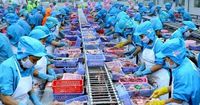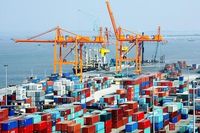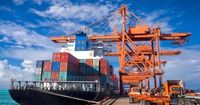As Vietnam continues to bolster its presence in global trade, the country is urged to refine its strategies for developing key export markets. On April 19, 2025, experts highlighted the necessity for sustainable development within Vietnam's major export industries, particularly in light of the shifting international dynamics and the need for a proactive approach to raw material sourcing.
According to TS. Le Duy Binh, Director of Economica Vietnam, the current approach to developing export markets for key product groups is fraught with vulnerabilities. "The development of export markets for key product groups is not truly sustainable and is vulnerable to changes in the international environment and import market policies," he stated. This sentiment underscores a pressing issue: Vietnam's dependency on imported raw materials, which he identifies as a significant barrier to achieving sustainable growth in these vital sectors.
Binh elaborated that without sufficient raw materials, businesses may struggle to fulfill orders, risking missed opportunities in export markets. He emphasized that companies must take initiative in producing their own raw materials to meet origin requirements, enhance export value, and leverage tax incentives available through free trade agreements (FTAs).
"Businesses need to develop raw material supply chains for key export products such as phones, computers, electronics, textiles, and footwear to gradually reduce their reliance on raw material imports," Binh advised. He also stressed the importance of establishing a stable and high-quality supply to ensure timely order fulfillment and maintain product quality.
In addition to raw material sourcing, economist Nguyen Minh Phong pointed out the critical need for enhancing the quality and value of export goods. "To sustainably develop export markets for key industries, the products themselves must ensure quality to compete fairly with goods from other countries," he said. Phong advocates for a focus on product improvement, research and development of new products, and alignment with current trends favoring clean, green, and environmentally friendly products.
As businesses work to elevate product quality, Phong noted that long-term investments in brand development are essential for increasing export value. He explained that today's consumers are more inclined to choose products with reputable brands that guarantee quality. "When trust is established with consumers, only then can the goal of strengthening the export market for key industries be achieved," he asserted.
Experts are increasingly emphasizing the need for Vietnam to diversify its export markets to mitigate reliance on a few major markets, particularly the United States. Delegate Nguyen Quang Huan warned that heavy dependence on a limited number of large export markets poses risks, especially in light of potential policy changes. "If we rely too much on large markets like the U.S., we face significant risks when sudden changes occur in their policies or tariffs," Huan cautioned.
To counter these risks, Huan recommends that Vietnam pursue additional trade agreements with various countries to expand market access and decrease dependence on a select few. He highlighted the importance of diversifying export opportunities to stabilize the economy and ensure continued growth.
Echoing Huan's sentiments, TS. Nguyen Bich Lam emphasized that market expansion should align with the capabilities of each enterprise. He suggested that small and medium-sized enterprises (SMEs) focus on more stable and less risky markets, such as the European Union, Japan, ASEAN, and Africa.
As an example, Lam mentioned the leather and footwear industry, which aims for an export turnover of approximately $29 billion in 2025, reflecting a 10% growth compared to 2024. The textile industry is targeting $47 to $48 billion in exports, an increase of $3 to $4 billion from the previous year. These ambitious goals highlight the necessity for these industries to explore new markets in South America and the Middle East.
Moreover, PGS.TS Pham Thi Hong Yen, a member of the National Assembly's Economic and Financial Committee, stressed that expanding and diversifying markets is vital for the development of key export sectors such as textiles, leather, wood products, and agricultural products. She noted that the broader the customer base, the greater the opportunity to maintain and expand market share.
Yen recommended that businesses leverage support from Vietnamese trade offices abroad and engage more actively in trade promotion activities to identify suitable new markets. "When discovering potential importers, Vietnamese businesses need to thoroughly understand their quality standards and regulations to comply effectively," she advised.
In the context of Vietnam's overall trade performance, preliminary statistics from the General Department of Customs reveal that the total import-export value for the first half of April 2025 reached $35.44 billion. This figure marks a 10.6% decrease compared to the latter half of March 2025.
In detail, Vietnam's export value during this period stood at $16.75 billion, reflecting an 18.3% decrease compared to the previous period. Cumulatively, by April 15, the total export value reached $119.62 billion, which is a 10.5% increase compared to the same period in 2024.
Conversely, imports during the first half of April reached $18.69 billion, a decrease of 2.4% from the previous period. Cumulatively, total imports reached $118.35 billion, an increase of 16.7% from the same period last year. Notably, the trade surplus from the beginning of the year to April 15 was $1.27 billion.
The primary imported goods in early April were those supporting production and export activities. The Department of Import-Export is currently focusing on enhancing export promotion activities, seeking new markets, and maximizing benefits from FTAs like CPTPP, EVFTA, and RCEP. They are also accelerating negotiations for new trade agreements to diversify markets and boost exports further.
As Vietnam navigates these pivotal moments in its export journey, the focus remains on strategic development, quality enhancement, and market diversification to solidify its position in the global trade landscape.






